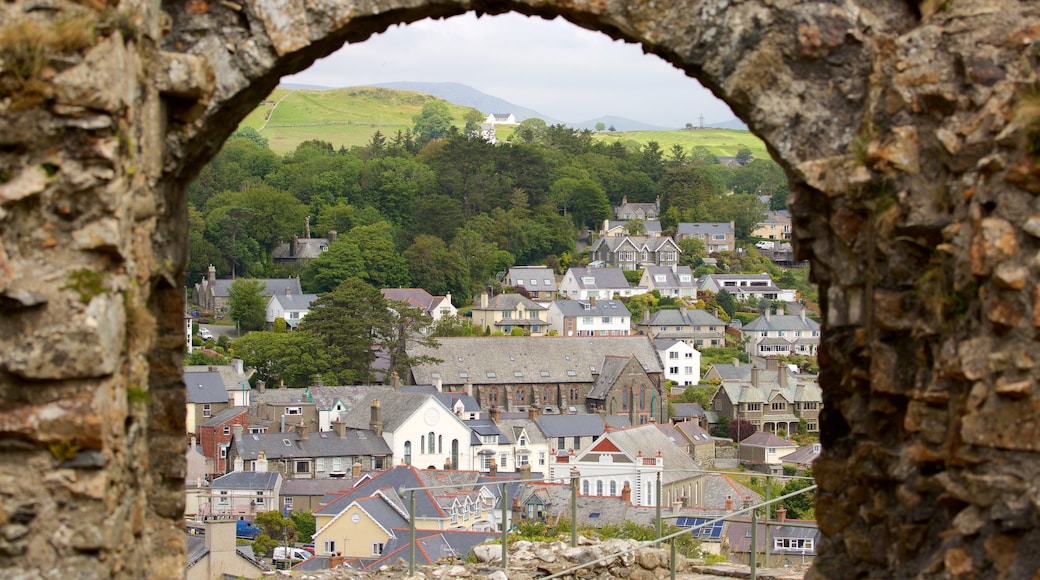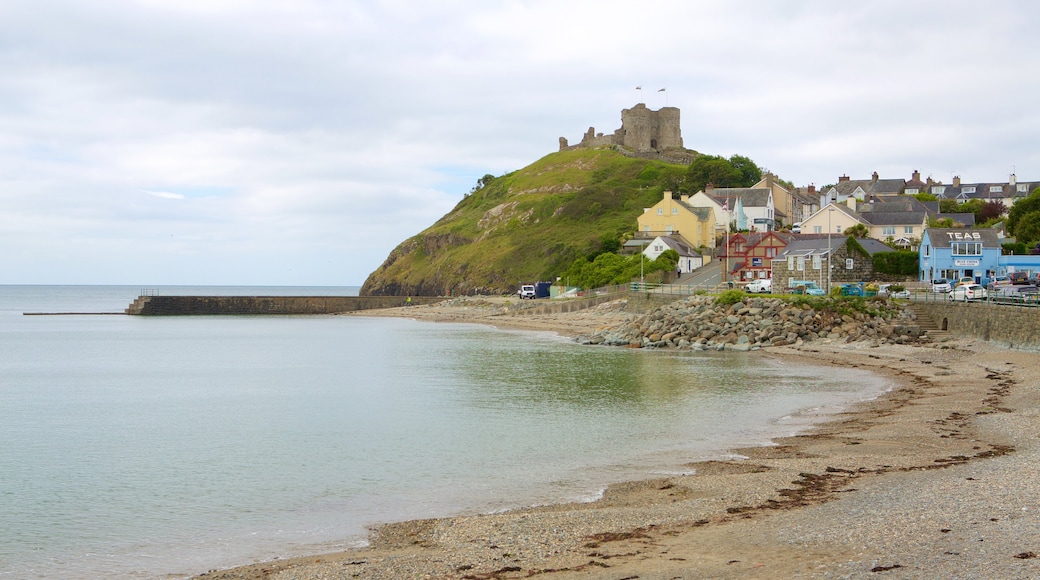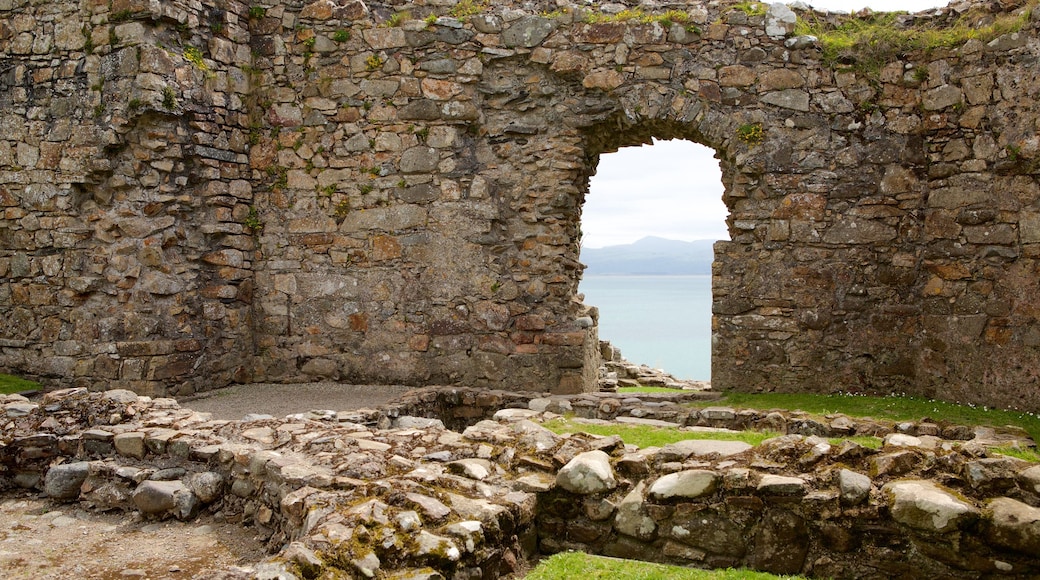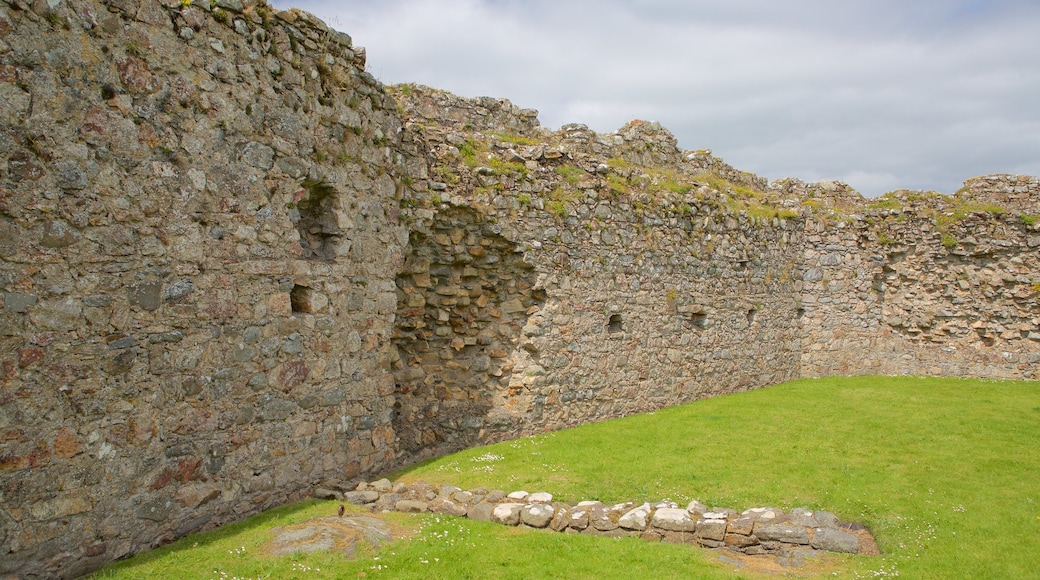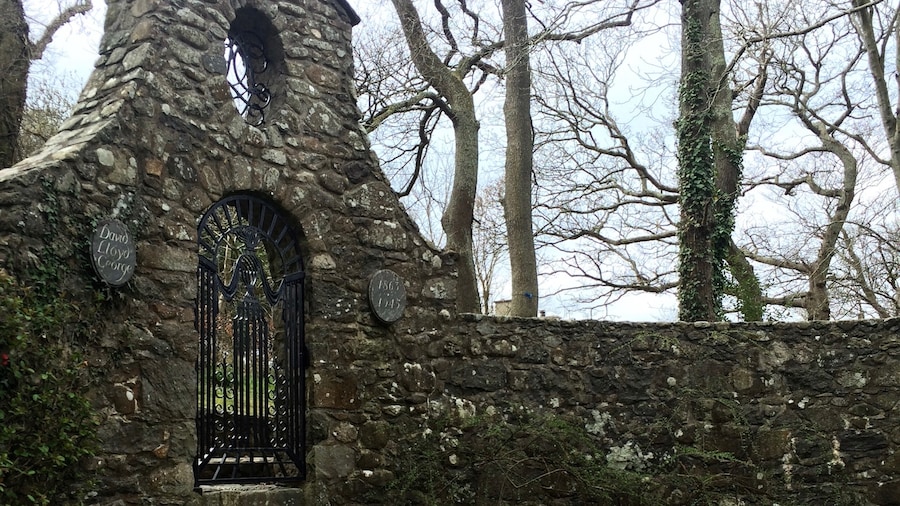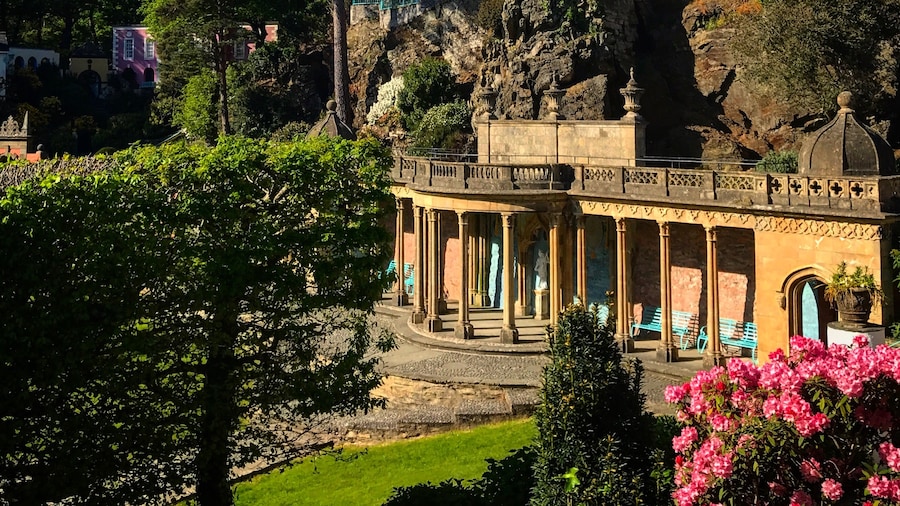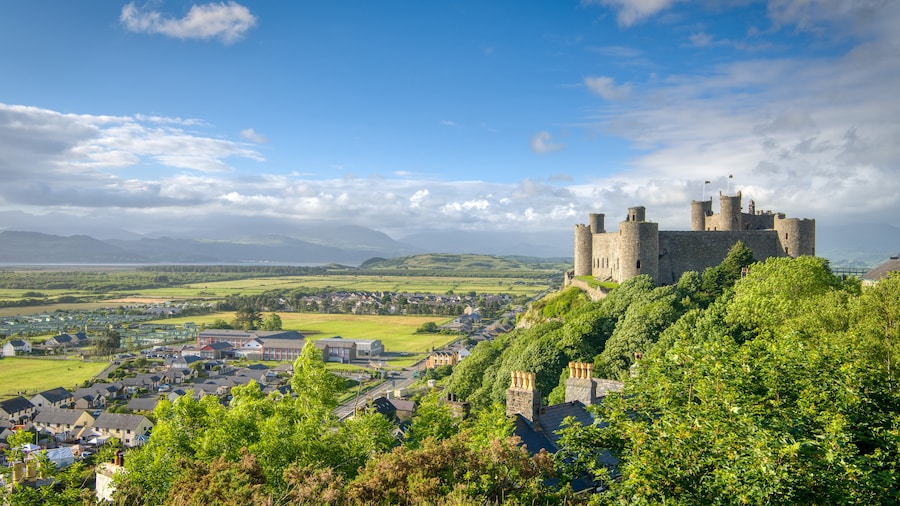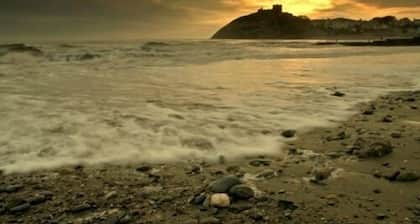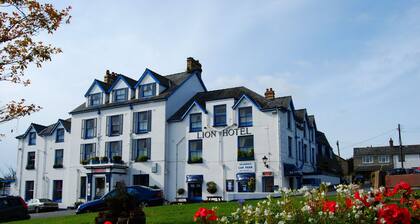Criccieth Castle is a historic landmark perched on a headland between the two town beaches of Criccieth. Established as a 13th-century stronghold by Llewelyn the Great, Edward I of England seized and remodeled it in 1283. Criccieth Castle was set ablaze in 1404 by Owain Glyn Dŵr during a revolt against English troops. Today, visit the ruined fortress bearing testament to the medieval battles between the English and Welsh.
A steep path leads from the town up to the castle. As you climb, you may experience a shrinking feeling when the castle’s imposing towers and gatehouse come into view. Note the scorch marks on the wall, which are the result of the fire that destroyed large parts of the building.
Step through the gatehouse to a walled courtyard and imagine a time when men-at-arms attacked invaders with arrows and other weapons. Peek through the arrow slits, as soldiers would have done while trying to spot potential invaders. Peer down the well, which served as a natural water supply to the castle.
Learn about how Criccieth Castle’s dramatic location has been an inspiration to artists. Most famously, the English painter J.M.W. Turner painted the castle as a backdrop for his landscapes of shipwrecked sailors.
Enjoy the panoramic views from the castle’s grounds. Look down on the town’s quiet beaches and west across Llŷn Peninsula. Gaze north toward Snowdonia National Park and Wales’ highest mountains, including 3,560-foot-tall (1,085-metre) Snowdon. On a clear day look for Harlech Castle, located southeast across Tremadog Bay.
The castle is just a 10-minute walk from Criccieth’s town centre and train station. Use the free parking available on the streets at the base of the headland.
Criccieth Castle is open daily, expect for select public holidays, and has an admission fee. Take advantage of the free admission between November and March from Monday to Thursday. Information about the castle and impressions of its original structure are on display at the visitor centre.
